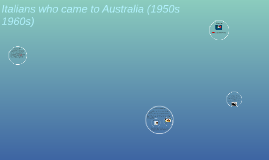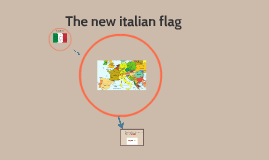Italian Flag
Transcript: What did Roman's Eat? The Roman Colosseum is one of the most recognizable and impressive structures in the world. Originally named Epithelium Fl avian, or the Fl avian Amphitheater, it was given the name The Colosseum during the Middle Ages due to the colossal statue that stood near it. Located in Italy, this amazing structure remains standing almost 2,000 years after it was originally constructed. One of the reasons behind the Colosseum appeal is its architectural design, which was both advanced and complex. The brutal and bloody history of the structure and its use to control the populace is another fascinating if not morbid part of the interest in the structure. For short messages and at school, Roman wrote on soft wax tablets using a pointed metal stylus. To use the tablet again, or rub out a mistake you smoothed the wax over with the blunt end of the stylus. For important letters the Romans used a metal pen dipped in ink. They wrote on thin pieces of wood or on specially prepared animal skins. Books did not have pages, they were written on scrolls made from pieces of animal skin glued together and then rolled up.We know that Roman women wrote letters, because some of their letters have survived. One was found at Vindolanda, a fort near Hadrian's Wall in Northumberland. It is a birthday party invitation from Claudia Severa to her friend Sulpicia Lepidina and was written about AD 100. Roman toys Life as a Roman Men wore a knee-length tunic (Hilton), either sleeveless or short-sleeved. Roman men wore a cloak over their tunic, which was like a wide shawl that was draped over the shoulder and carefully wrapped around the body.Women wore a longer tunic which was often ankle-length. Over this the women wore a stoma which was a full length from neck to ankle, high- wasted and fastened at the shoulders with clasps. Roman food Roman toy soilder Numbers The Roman Colloseum Rome Here you will learn about Roman's and their life Roman Numbers What did the Romans write with? Roman clothes Roman Clothes Life for women in Roman times was often hard. Mother was less important than father in the family. Father had the power of life or death over everyone. When a new baby was born it would be laid at its father's feet - if the father picked the baby up it would live, but if he ignored the baby it would be taken away to die. Women were expected to run the home, cook meals, and raise children. If they were wealthy, women were lucky; they had slaves to do the work.Many girls were married at the age of 14. Marriages were often arranged between families. A man could divorce his wife if she did not give birth to a son. Many women died young (in their 30s), because childbirth could be dangerous, and diseases were common. Poor Romans ate bread, vegetable soup, and porridge. Meat was a luxury, unless they lived in the countryside and could go hunting or fishing. Poor people's small homes had no kitchens. So they often took food round to the baker, to cook in his oven. Many people bought takeaways, such as sausages or fried fish, from food-shops. Rich Romans had food cooked at home in the kitchen by slaves. Most ate a light breakfast, and a snack at mid day - perhaps bread and cheese, or boiled eggs and salad. They ate dinner in late afternoon, with a starter, a meat course (such as hare, pig, beef, goat, chicken, fish or pigeon) followed by fruit or nuts. Ice cream was a treat. Lettuce was served at the end of a meal because Romans believed it helped you sleep. Roman children had some toys very like ones we play with today - such as toy soldiers, rattles, balls, doll's houses, carts and pull-along animals on wheels. Even poor children had board games, using pebbles for counters, and wooden dolls. Some dolls had moveable arms and legs. Roman children had ivory letters to practice their spellings with. Favorite Roman pets were dogs, birds and monkeys. pencil The Coloseum The easiest way to note down a number is to make that many marks - little I's. Thus I means 1, II means 2, III means 3. However, four strokes seemed like too many.... V So the Romans moved on to the symbol for 5 - V. Placing I in front of the V — or placing any smaller number in front of any larger number — indicates subtraction. So IV means 4. After V comes a series of additions - VI means 6, VII means 7, VIII means 8.X X means 10. But wait — what about 9? Same deal. IX means to subtract I from X, leaving 9. Numbers in the teens, twenties and thirties follow the same form as the first set, only with X's indicating the number of tens. So XXXI is 31, and XXIV is 24.L L means 50. Based on what you've learned, I bet you can figure out what 40 is. If you guessed XL, you're right = 10 subtracted from 50. And thus 60, 70, and 80 are LX, LXX and LXXX.C C stands for centum, the Latin word for 100. A centurion led 100 men. We still use this in words like "century" and "cent." The subtraction rule means 90 is written as XC. Like the X's and L's, the C's are tacked on to the

















